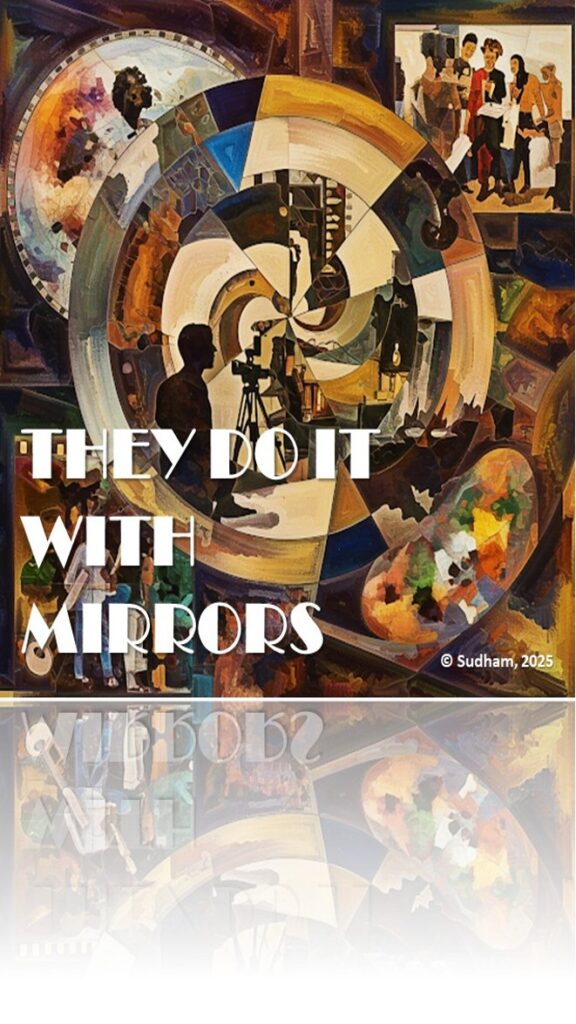They Do It With Mirrors

Enough has been said and written about the fact that we live in a hyper-connected world. The “Sociosphere” is constantly buzzing with activity- some frivolous, some thought-provoking and some meaningless stuff. Simply put, it demonstrates and proves what has been said all along. “It takes all kinds to make the world!”
People have always had opinions and they always have wanted to voice them. Today more than ever before there are platforms that provide all of us means to air these thoughts, as, how, when and where we as individuals deem fit. Probably, also the most commonly held perception of what the Right to Freedom of Expression is.
It may be pertinent refer to some known to be liberal constitutions v.i.z. USA, France and home turf India. All of them guarantee freedom of speech/expression as a fundamental right. However, through the First Amendment to the Constitution of the United States or even by the First Amendment to the Constitution of India (1951- within 15 months of India declaring itself a Republic) this constitutional guarantee was brought within what are popularly termed “reasonable restrictions” that could be placed by the State through other laws. Even the French Declaration of Rights of Man and of the Citizen ab initio through its Article 4 prefaces the other articles. I quote it only to illustrate how simple and pure the spirit of these so called reasonable restrictions are or ought to be.
“Liberty consists in being able to do anything that does not harm others: thus, the exercise of the natural rights of every man has no bounds other than those that ensure to the other members of society the enjoyment of these same rights. These bounds may be determined only by Law.”
Does this mean that we need to have a measure of exactly how thick skinned or thin skinned people around us (aka society) are? Moreover, is the State the authority to determine the same?
There are many determinants I would argue, all of them pertaining to time, place and context. Simply put who is in control/has authority on one hand and on the other, one who wants to question it or at least question the extent of it if not rebel against it.
Often this rebellion or questioning of the so called authority finds its way into art. Contemporary art often engages directly with the complexities and urgencies of the current world, responding to personal, social, or political concerns. Yes it is true that art does exist for art’s sake to borrow from MGM’s famous Latin tagline Ars Gratia Artis.
The gratification for the artist more often than not lies in her ability to evoke a response – any kind is fulfilling. Yes, it is to this end that content creators create the content that they do. That said, it would be naïve to believe that there is no desire to profit from what has been created. However, let’s put a pin on that thought.
Getting back. The history of mankind has literally been pieced to together with the help of art of the times. Good, bad, happy, prosperous, dark or tyrannous all periods of history have been defined or labelled so basis what has been written, painted, sculpted, edified or erected.
Contemporary art, in today’s context embraces diverse mediums, techniques, and concepts. It encompasses everything from traditional painting and sculpture to digital media, performance art, installations, and conceptual pieces where the idea behind the work may hold precedence over aesthetic execution.
Essentially, art is not the preserve of a few. It is consumed by many and interpreted in their myriad ways. So what is funny to one may be insensitive to the other, who hasn’t seen or been hurt by the school yard bully. What is erotic may be construed obscene by some and many more such diametric views and opinions may exist about everything – including art.
If I was just to trace the journey of India in its first 75 years of existence as an independent nation. We have as a society showered our love upon celluloid heroes who have played the downtrodden common man, the con man, the criminal with a troubled past and the rebel. Their ends almost always justifying their means. If observed closely, one would find undeniable inspiration coming from the socio-political and economic context of the nation.
Were there no controversial artists then or were people more tolerant or were people less insensitive?
Regardless of the times this content was created. Even without taking names, people who read and/or are generally aware would be able to guess the individuals or organisations being referred to just by a five-word description of the art or content genre. For example – The woman with weird clothes or the woman who makes bold announcements or the man who painted naked goddesses or the man who wrote a controversial book or the paper that published the cartoon.
Mind you, not all have consumed the content in question yet they have a point-of-view about the content and the creator of the content. That, in essence, is the power of content – it can provoke as much as it has the ability to evoke.
It is easy to point fingers, assign blame but the jokes we crack, the rumours we spread, the gossip that we partake in and the acts that we deride or applaud are all material that is fuelling the content or art that is being created today.
The artists and the content creators are just the ones holding up the mirrors!
